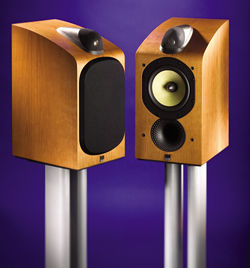Danny in good at crossover designs and he fixes broken loudspeakers thats wrongly constructed in the beginning.
Being a DIYer myself- its rather easy to make faulty loudspeakers sound better if you got measurement tools and the skills do make it better.
And yes - cheap crossover parts with iron-coils and electrolyte capacitors are not good for soundquality.
You can get better , cleaner sound with air-coils and polyprops. An ironcoil inductor saturates at only a few watts depending on construction. Meaning its gonna distort massively. This is a fact. But you dont need super-expensive parts. There is no real listening difference between an ordinary priced polyprop and a super expensive- my conclusions.
Danny sells expensive parts and it might not be neccesary but it wont hurt either.
And yes, different cable pick up different amounts of RF . If it matters ? It depends of the driving impedance and the application. An amplifier has low output impedance and is not particulary sensitive against RFI if it has small filter coils on the output or other protections.
Being a DIYer myself- its rather easy to make faulty loudspeakers sound better if you got measurement tools and the skills do make it better.
And yes - cheap crossover parts with iron-coils and electrolyte capacitors are not good for soundquality.
You can get better , cleaner sound with air-coils and polyprops. An ironcoil inductor saturates at only a few watts depending on construction. Meaning its gonna distort massively. This is a fact. But you dont need super-expensive parts. There is no real listening difference between an ordinary priced polyprop and a super expensive- my conclusions.
Danny sells expensive parts and it might not be neccesary but it wont hurt either.
And yes, different cable pick up different amounts of RF . If it matters ? It depends of the driving impedance and the application. An amplifier has low output impedance and is not particulary sensitive against RFI if it has small filter coils on the output or other protections.
Last edited:

